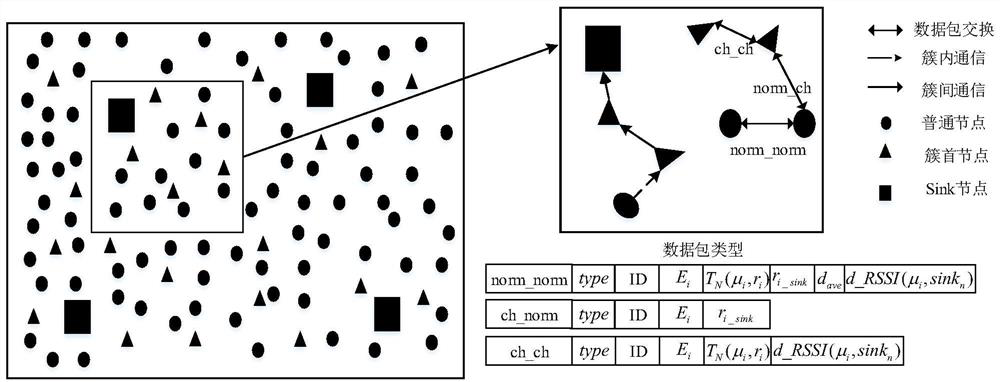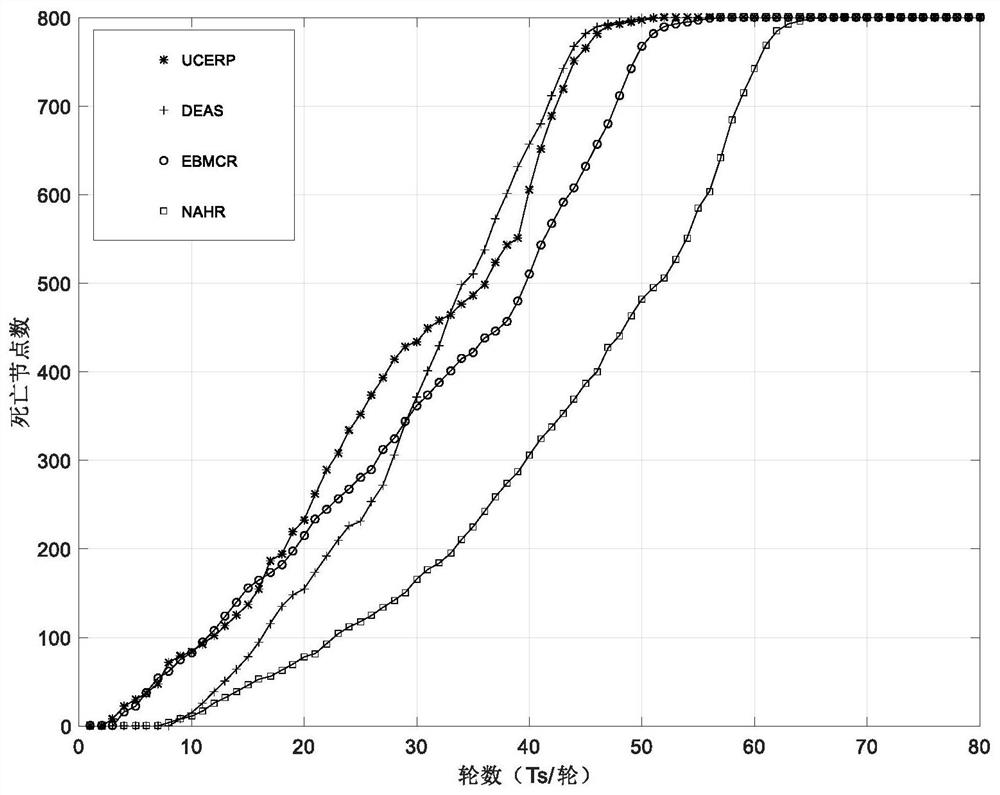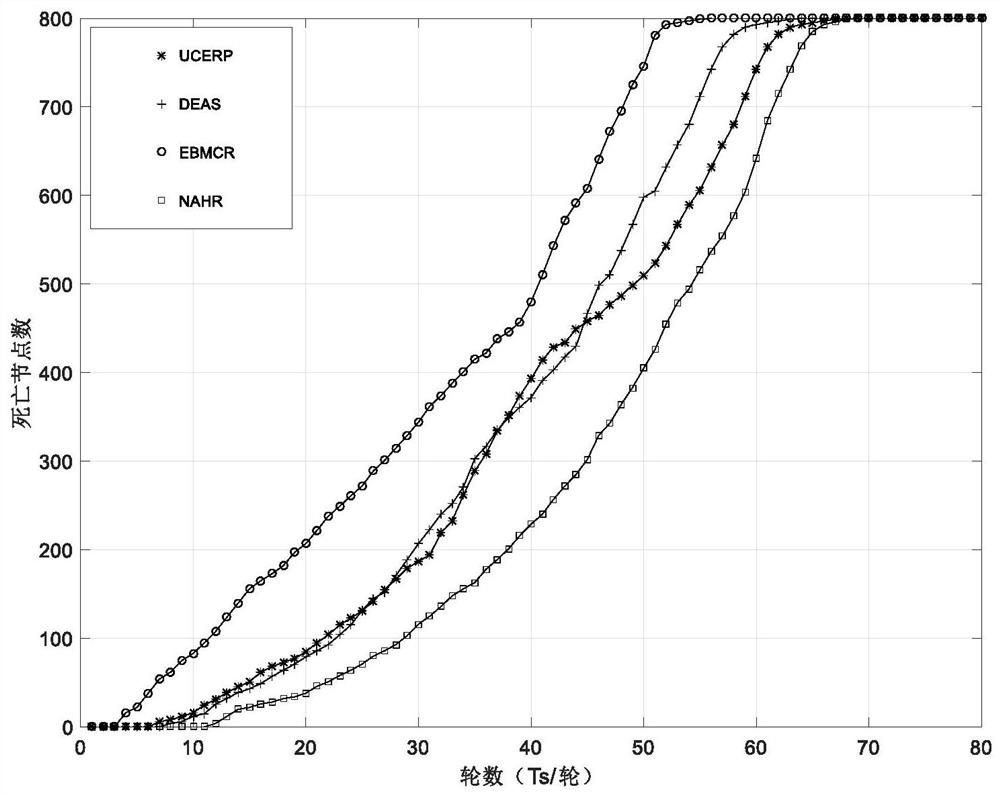A construction method of heterogeneous network in random multi-sink mode
A technology of heterogeneous networks and construction methods, applied in network topology, advanced technology, climate sustainability, etc., can solve the problems of unbalanced network energy consumption, short network life cycle, low node energy utilization rate, etc. Death, load reduction effect
- Summary
- Abstract
- Description
- Claims
- Application Information
AI Technical Summary
Problems solved by technology
Method used
Image
Examples
Embodiment 1
[0055] This embodiment provides a heterogeneous network construction method under the random multi-SINK mode. The heterogeneous nodes in the heterogeneous network use their own energy, reachable node set, average neighbor node distance, and distance signal set as the cluster head election criteria. Based on the weight matching strategy in multi-sink mode, the energy consumption of cluster heads is optimized; taking the energy of a single transit loss of cluster heads as the threshold, comprehensively considering the influence of its own energy and the distance signal set in multi-sink mode, an optimal The communication link optimizes the energy loss of the cluster-head nodes in the routing process while ensuring the link quality.
[0056] In a data-based wireless sensor network, the sink node is the ultimate goal of all data. The multi-sink mode is conducive to shortening the communication path and virtually dividing the network into multiple divergent small areas to improve th...
Embodiment 2
[0131] This embodiment provides an application in forest monitoring of a heterogeneous network in a multi-SINK mode constructed by the construction method described in Embodiment 1.
[0132] The sensor nodes are randomly deployed in the forest in a random way, and the forest status is monitored in real time. According to the networking method proposed by the NAHR algorithm, the collected information is transmitted to the network center to achieve the effect of timely alarming for abnormal conditions.
[0133] When networking, first obtain the initial energy, sensing radius, and location information of each sensor node and sink node, and then complete the determination of the cluster head node, multi- Dynamic adjustment of cluster radius and routing information of cluster head nodes under Sink screening mechanism. Finally, the constructed heterogeneous network is used to complete the real-time monitoring of forest conditions.
[0134] In order to verify the beneficial effects ...
PUM
 Login to View More
Login to View More Abstract
Description
Claims
Application Information
 Login to View More
Login to View More - R&D
- Intellectual Property
- Life Sciences
- Materials
- Tech Scout
- Unparalleled Data Quality
- Higher Quality Content
- 60% Fewer Hallucinations
Browse by: Latest US Patents, China's latest patents, Technical Efficacy Thesaurus, Application Domain, Technology Topic, Popular Technical Reports.
© 2025 PatSnap. All rights reserved.Legal|Privacy policy|Modern Slavery Act Transparency Statement|Sitemap|About US| Contact US: help@patsnap.com



